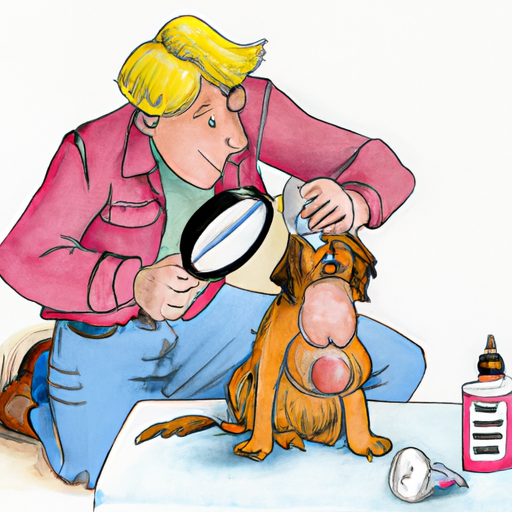As a caregiver, you take on the responsibility of ensuring the wellbeing of those in your care, including your pets. Dogs, being man’s best friend, require special attention when it comes to their health, especially when dealing with pests like fleas.
Understanding The Flea Life Cycle
Before you can effectively control and eliminate flea eggs on your dog, it’s essential to understand the life cycle of a flea. Fleas go through four stages: egg, larva, pupa, and adult. The adult flea lays eggs on your dog’s fur, which then drop off into the environment to continue the life cycle.
- Egg: Fleas lay their eggs on your dog’s fur. These eggs are tiny, white, and can easily fall off your dog and into your environment.
- Larva: Once the eggs hatch, they become larvae. These tiny, worm-like creatures feed on organic debris in the environment.
- Pupa: After a week or two, the larvae spin a cocoon and develop into pupae. This is the transformation stage into adult fleas.
- Adult: After a week or two in the pupal stage, an adult flea emerges. They then look for a host, like your dog, to feed and lay more eggs.
Identifying Flea Eggs on Your Dog
Flea eggs can be challenging to spot due to their tiny size and color. They’re about 0.5 millimeters long and are white or transparent. Unlike adult fleas, flea eggs don’t move. They can usually be found in your dog’s fur, especially around the neck, tail, and belly.
Essential Steps to Kill Flea Eggs on Dogs
- Regular Grooming: Frequent brushing of your dog’s coat can help remove flea eggs. Use a fine-toothed flea comb, paying particular attention to the neck, tail, and belly areas.
- Use a Flea Shampoo: There are many flea shampoos available that can kill flea eggs. Make sure to follow the instructions on the bottle.
- Flea Treatments: Topical treatments, oral medications, and flea collars are all effective ways to kill flea eggs and prevent new infestations.
- Clean Your Environment: Since flea eggs can fall off your dog into your home, it’s crucial to clean your environment regularly. Wash your dog’s bedding, vacuum carpets and floors, and treat your home with a flea spray if necessary.
Prevention is Key
Once you’ve gotten rid of the flea eggs on your dog, your next step is to prevent future infestations. Regular grooming and the use of preventive treatments can help keep your dog flea-free.
| Prevention Method | Description |
|---|---|
| Regular Grooming | Brush your dog regularly with a flea comb. |
| Topical Treatments | Apply a monthly treatment as directed. |
| Oral Medications | Administer an oral flea preventative as directed by your vet. |
| Flea Collars | Use a flea collar for ongoing prevention. |
Frequently Asked Questions
Q: Can I see flea eggs on my dog?
A: Flea eggs are tiny and white or transparent, making them hard to see, especially on a light-colored dog. Using a fine-toothed flea comb can help you find them.
Q: How long does it take for flea eggs to hatch?
A: Flea eggs typically hatch into larvae within 2 to 14 days.
Q: How often should I groom my dog to prevent fleas?
A: Regular grooming is essential for flea prevention. Ideally, you should groom your dog daily, especially during flea season.
Q: Can I use home remedies to kill flea eggs on my dog?
A: While some home remedies may help control fleas, they are not as effective as vet-recommended treatments at killing flea eggs.
Remember, as a caregiver, your role is not only to treat but also to prevent. Stay ahead of the game and ensure your furry friend remains flea-free.



